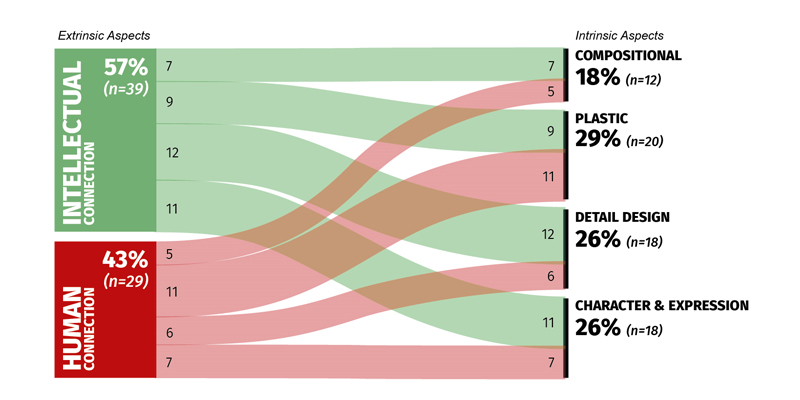Architects’ Perspectives on the Main Aspects That Inform Aesthetic Preferences in Façade Design
Downloads
DOI:
https://doi.org/10.7480/jfde.2021.2.5540Keywords:
facade, design, aesthetics, architecture, interviews, content analysisAbstract
The aesthetic of our built environment is perceived as an important aspect to consider for the design of human-centred cities, but a problem quickly arises in the presence of clashing conceptions of what we understand to be aesthetically pleasing. This paper adds to this discussion, by exploring architects’ aesthetic preferences in façade design, aiming to include design practitioners in a debate that so far has remained largely academic. Thus, the goal of the study was to identify relevant aspects, based on a series of semi-structured interviews with practitioners representing 34 architectural firms from The Netherlands, carried out from January to April 2020.
It was possible to identify two major types of aspects, and subsequent sub-groups. Intrinsic aspects (compositional, plastic, detail design, and character) comprise aspects that are characteristic of a façade as an object, while extrinsic aspects (human, intellectual, and contextual connection) consist of relational features, determining the perceived beauty of a façade in terms of its connections with an outside agent. The main identified aspects in each one of the groups, the potential relations among them, and their relative relevance within the surveyed sample were part of the assessment, comparing the outcomes against previous results from the literature.
How to Cite
Published
Issue
Section
License
Copyright (c) 2021 Alejandro Prieto, Mimi Oldenhave

This work is licensed under a Creative Commons Attribution 4.0 International License.
Authors or their institutions retain copyright to their publications without restrictions.
